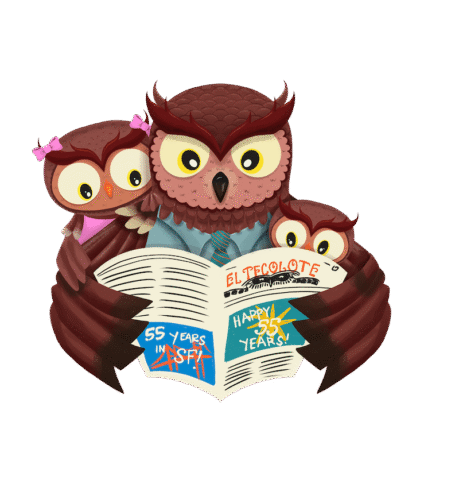At the entrance to SOMArts’ annual Día de Muertos exhibition, a giant papier-mâché heart beats in rhythm with the music echoing through the gallery. Painted in bright alebrije-style colors, the heart glows with projected images of fire, earth, wind and water. Titled “Oceloyollot!: The Unconquerable Heart,” the piece serves as both the literal and spiritual core of this year’s theme: “We Love You.”
Among the many altars that bloom across San Francisco each October, few are as emotionally charged as those curated by Rio Yañez, who continues the artistic legacy of his father, René Yañez. “My father, René Yañez, was one of the curators of the first wave of Día de los Muertos art exhibits and programming in the mid-’70s in the Mission District,” Rio said, crediting his father for helping pioneer the idea of altars as art installations.

Born and raised in the Mission, Rio began assisting his father in 2005 and soon became his co-curator at SOMArts, which has since become the permanent home for their exhibition. This year marks his 20th year carrying that tradition forward while meeting the current moment. “I think what’s important to me about the show is that it’s a way to respond as a curator and to cultivate artists,” he said, “to respond to what’s happening in the world through honoring the dead.”
This year’s exhibition responds to the Trump administration’s attacks on LGBTQ+ rights, women’s rights and immigration, interpreted through the eyes of women, queer and trans artists.
”Unfortunately, as people will look at the news, [our communities] are continually attacked,” said Bridgètt Rex, co-curator of the exhibition. “So we want to give them space to be able to say their piece, be who they are, in a safe environment that SOMArts provides for us year after year.”
After Trump’s election, Rex and Yañez shaped the “We Love You” theme as both resistance and affirmation. “There’s so much emotional warfare in the news, lots of bullying,” Rex said. “We Love You is the antidote to that bullying and to the fear being imposed upon our communities.”

Yañez said he’s proud that the exhibition includes both traditional altars and modern, conceptual pieces that challenge what mourning and remembrance can look like.
One striking example is an egg-shaped altar that visitors can sit inside, representing transgender people who died before coming out or completing their transitions. The egg is wrapped in fabric covered with pasted news clippings about trans issues, including a headline on the Supreme Court’s decision to ban gender-affirming care for minors and a vintage article titled, “Tragic story of a girl who wants to be a man.” In a Sharpie-red statement in all caps is the question, “How many of us would there be if things were different?”
Inside the egg, several chairs face an altar made of charcoal drawings of faces and bodies, alongside a statement that reads: “We honor those who died in the egg, who never had a chance to live their truth, who never found an answer to the feeling of wrongness in their souls, and who are buried under false names. To those souls, We Love You.”
“It’s a really powerful metaphor,” Yañez said.

Another altar, titled “Memento (ME)mori(as),” reflects on intergenerational trauma. It honors people “who had to rebuild after our families tried to break us.” Constructed with black chalkboard walls, the installation invites visitors to write down a “generational curse” they want to break using vibrant chalk markers, or to hang a note on a green wire mimicking a vine. One panel reads simply: “We are not our ancestors.”
Created by Chicana artist Liv Styler, the altar was created for people “who’ve been brave enough to walk away from family, or replant their own roots.” Styler said she was nervous no one would connect with her work, even arriving late to the opening. When she finally walked in, she saw people gathered around her altar. ‘It was a big moment for me,’ she said. ‘I cried a lot, and I’m not a big crier.

For Yañez, creating altars at home every year since childhood paved the way for embracing reinterpretation: “It was never bound by any sort of rules or things that had to be there,” he said.
His advice to first-time altar-makers: “It’s entirely up to you. Whatever feels right and good. There’s no need to be intimidated. Just leave something personal and meaningful for someone you want to honor.”
Erika Carlos contributed to this report.
“We Love You” is on display at SOMArts Gallery, 934 Brannan St., San Francisco, through Nov. 7. For hours and details, visit somarts.org.




